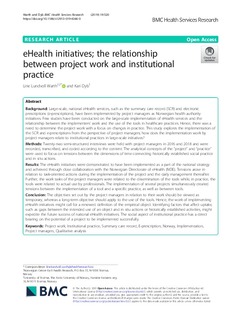| dc.contributor.author | Johansen, Ida Beitnes | |
| dc.contributor.author | Henriksen, Eirik Haugstvedt | |
| dc.contributor.author | Shaw, Jenny Carolyn | |
| dc.contributor.author | Mayer, Ian | |
| dc.contributor.author | Amundsen, Per-Arne | |
| dc.contributor.author | Øverli, Øyvind | |
| dc.date.accessioned | 2019-08-12T14:58:57Z | |
| dc.date.available | 2019-08-12T14:58:57Z | |
| dc.date.created | 2019-08-06T08:42:18Z | |
| dc.date.issued | 2019 | |
| dc.identifier.issn | 2045-2322 | |
| dc.identifier.uri | http://hdl.handle.net/11250/2607987 | |
| dc.description.abstract | Conspicuous carotenoid ornamentation is considered a signal of individual “quality” and one of the most intensely studied traits found to co-vary with parasitism. Since it has been suggested that only “high quality” individuals have enough resources to express excessive sexual ornaments and resist parasites, current theory struggles to explain cases where the brightest individuals carry the most parasites. Surprisingly little emphasis has been put on the contrasting routes to fitness utilized by different parasite species inhabiting the same host. Using Arctic charr (Salvelinus alpinus) as model species, we hypothesized that skin redness and allocation of carotenoids between skin and muscle (redness ratio) will be positively and negatively associated with parasites using the fish as an intermediate and final host, respectively. Both pigment parameters were indeed positively associated with abundances of parasites awaiting trophic transmission (Diplostomum sp. and Diphyllobothrium spp.) and negatively associated with the abundance of adult Eubothrium salvelini tapeworms. These empirical data demonstrate that contrasting associations between carotenoid coloration and parasite intensities relates to the specific premises of different parasite species and life cycle stages. | nb_NO |
| dc.language.iso | eng | nb_NO |
| dc.rights | Attribution-NonCommercial-NoDerivatives 4.0 Internasjonal | * |
| dc.rights.uri | http://creativecommons.org/licenses/by-nc-nd/4.0/deed.no | * |
| dc.title | Contrasting associations between breeding coloration and parasitism of male Arctic charr relate to parasite species and life cycle stage | nb_NO |
| dc.type | Journal article | nb_NO |
| dc.type | Peer reviewed | nb_NO |
| dc.description.version | publishedVersion | nb_NO |
| dc.source.volume | 9 | nb_NO |
| dc.source.journal | Scientific Reports | nb_NO |
| dc.source.issue | 1 | nb_NO |
| dc.identifier.doi | 10.1038/s41598-019-47083-x | |
| dc.identifier.cristin | 1714187 | |
| cristin.unitcode | 192,16,2,0 | |
| cristin.unitcode | 192,16,3,0 | |
| cristin.unitname | Institutt for mattrygghet og infeksjonsbiologi | |
| cristin.unitname | Institutt for produksjonsdyrmedisin | |
| cristin.ispublished | true | |
| cristin.fulltext | original | |
| cristin.qualitycode | 1 | |

